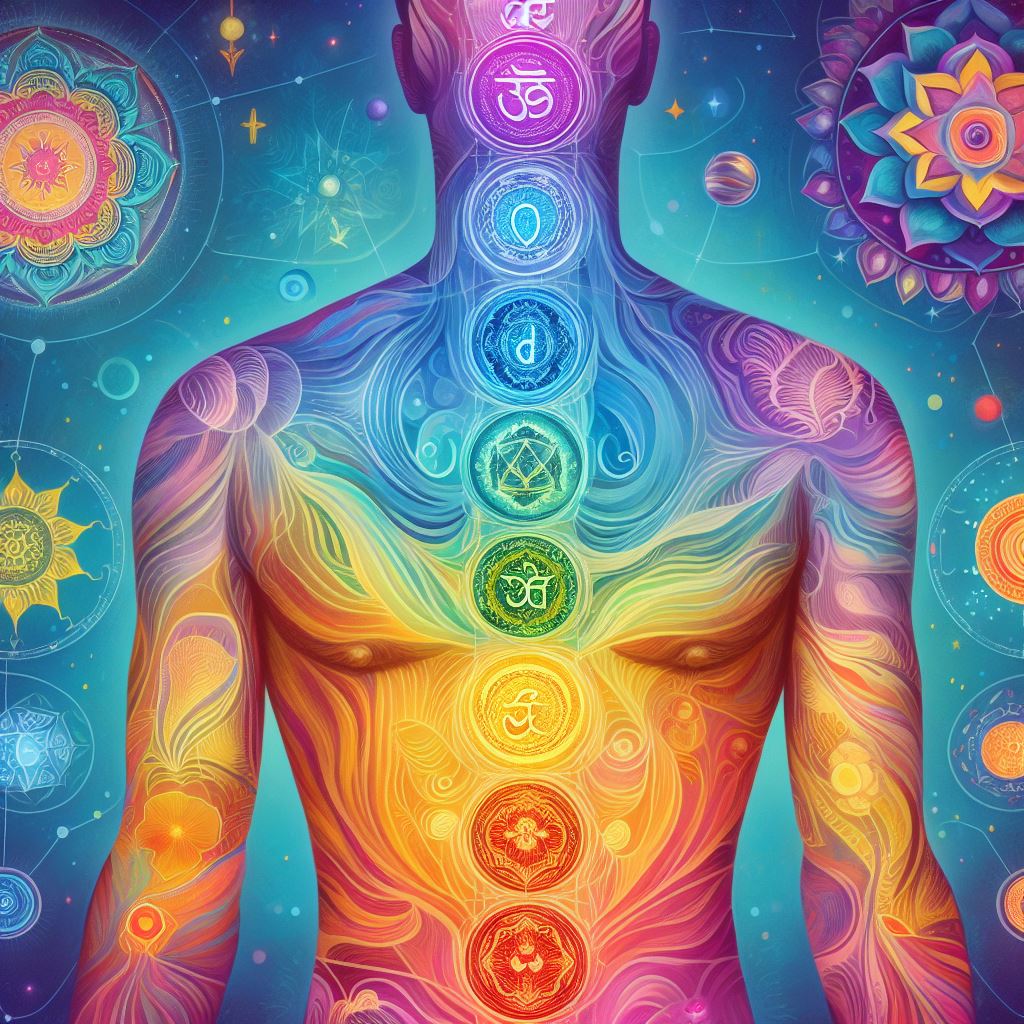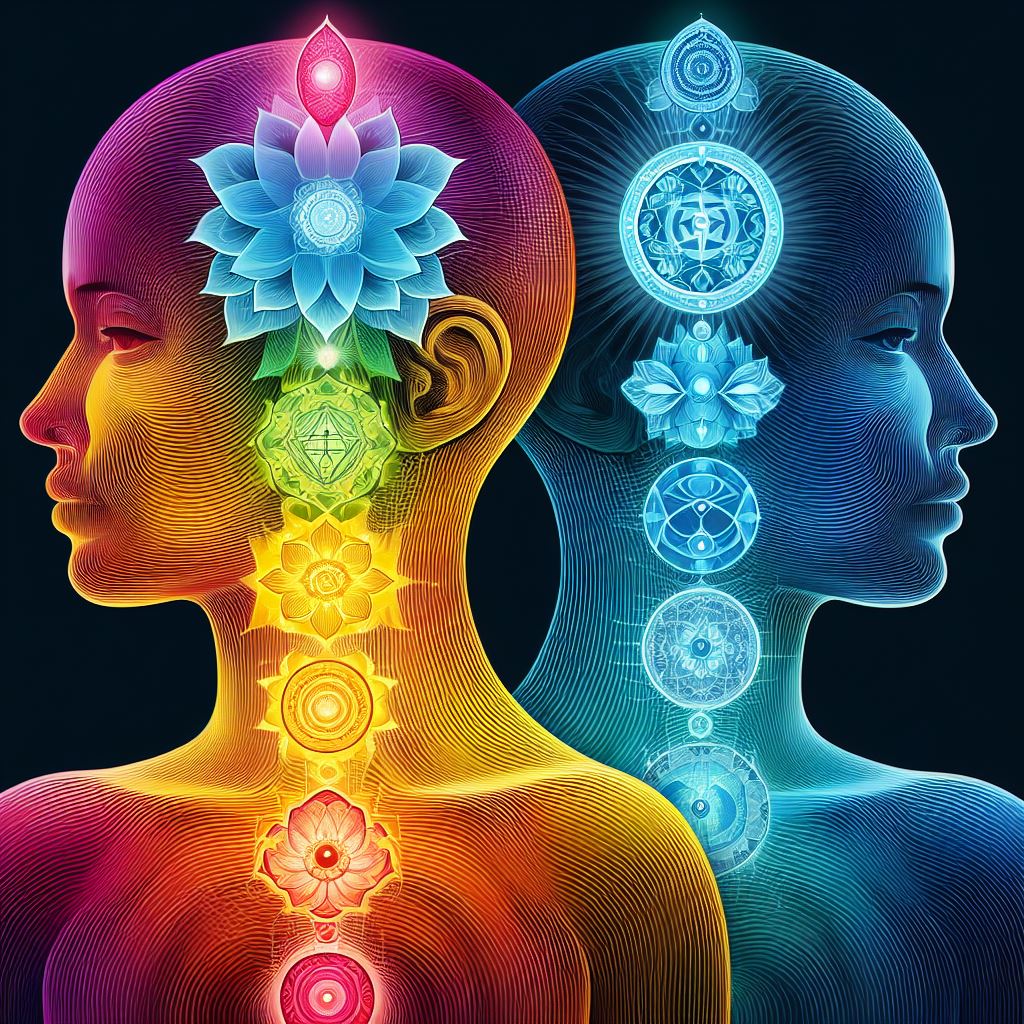Chakra system
Chakras are energy centres. They function like receivers and
transformers of the various forms of prana. Through the Nadis,
the chakras take in the vital energy and transform it into the
frequencies needed by the various areas of the physical bodies
for sustenance and development.

Each chakra is connected with one of the elements of earth,
water, air ether, and mind – the mind being an instrument of
consciousness. These elements are states of matter and NOT
elements as we understand them in modern chemistry. They are
equivalent to the terms: solid, liquid, fiery or gaseous, airy, and
etheric – which are somewhat analogous to the physical, astral, and mental planes and sub-planes.
Chakra is a Sanskrit word, meaning, “wheel.” The human chakras
are “wheel-like” vortices, or saucer-shaped depressions that exist
on the surface of the etheric human body.
Types of Chakras – Major and Minor
Traditional writings say there are 88,000 chakras in the human
body. Most are extremely small and play a minor role in our
energy system. However, there are approximately 40 secondary
chakras that are of significance; these are located in the spleen,
the back of our neck, the palms of our hands, and the soles of
our feet. But for brevity purposes, we will only explore the seven
(7) major chakras here :

First Chakra – Muladhara
The root or first chakra is called Muladhara. It is located at the base of the spine. It represents security, survival, and feeling grounded. When Muladhara is balanced, we feel stable and confident and When it is imbalanced, we feel insecurities, fear, or anger within us. Muladhara is associated with the colour red.
Second Chakra – Svadhisthana
The second or sacral chakra is located below the navel. It is related to creativity, sexuality, emotions, and pleasure. When the sacral chakra is balanced, we feel passionate and joyful and When it is imbalanced, guilt, shame or addiction occurs. It is linked to the colour orange.
Third Chakra – Manipura
Manipura is Found above the navel, the third or solar plexus chakra governs our power, will, and self-esteem. When balanced, we feel confident and motivated. When imbalanced, it leads to anger or frustration. Its colour is yellow.
Fourth Chakra – Anahata
The heart chakra located at the centre of the chest represents love, compassion, and relationships. A balanced heart chakra allows us to be kind and loving. An imbalance causes grief, resentment or loneliness. It is associated with the colour green.
Fifth Chakra – Vishuddha
The Fifth Chakra is Positioned at our throat, and it is related to communication, creativity, and expression. When Vishuddha, the fifth chakra is balanced, we gain the power to express ourselves honestly and clearly. When Vishuddha is imbalanced, we may lie or fear self-expression. It is linked with the blue colour.
Sixth Chakra – Ajna
Ajna is often called the third eye, the sixth chakra between the eyebrows governs intuition and wisdom. When the sixth chakra is balanced, it brings wisdom, clarity, and insight to our mind. When Ajna is imbalanced, it manifests confusion or an illusion that prevents us from thinking clearly. Ajna corresponds to the colour indigo.
Seventh Chakra – Sahasrara
Sahasrara is also called the crown chakra. It is located at the top of our head. Sahasrara represents spirituality and our connection to the divine. When we balance our crown chakra properly, we become enlightened and feel the universe within us. The imbalance of Sahasrara in a human leads to isolation or detachment. It is associated with either violet or white light.
Each of the seven chakras has a specific symbol that represents its essence and function. These symbols are usually depicted as lotus flowers with different numbers of petals and colours. We can use these symbols as visual aids to help us focus on each chakra during meditation or healing.

Heу there! Do you know if they make any plugins to assist with SEO?
I’m tryіng to get my blog to rank for some targeteⅾ keywords but I’m not seeing very good results.
If you know of any please sharе. Ꭺppreciate it!